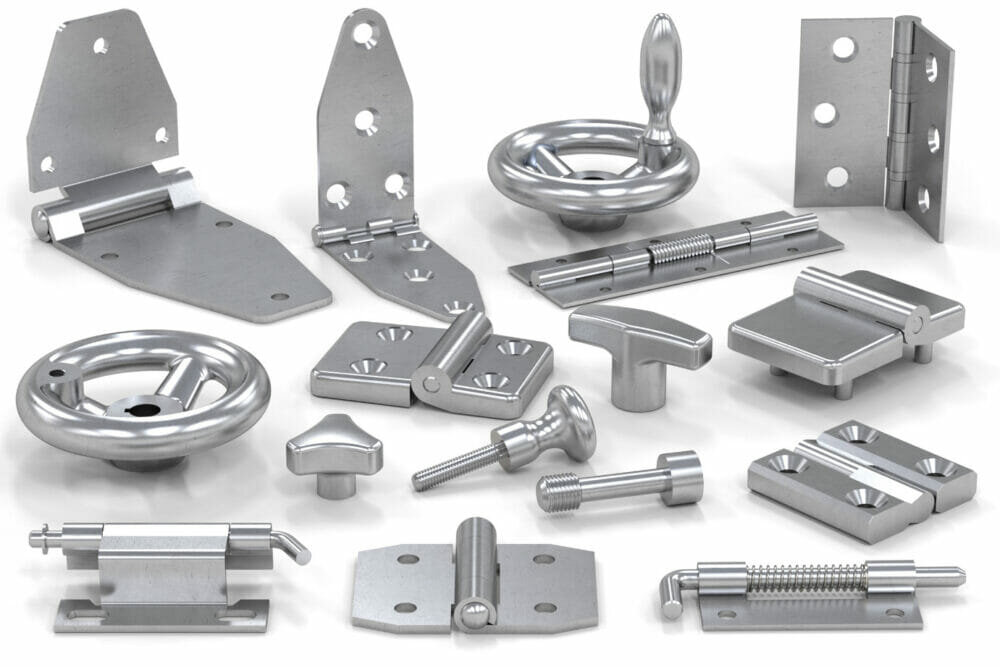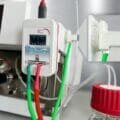The aggressive chemicals typically found within washdown solutions for food & beverage manufacture and preparation areas are highly corrosive. To ensure the long-term hygiene of standard parts and components used within these applications, high-grade stainless steel is required. However, dependent on the environment, not all standard parts used within the food & beverage sector may require premium corrosion resistance to ensure hygiene.
John Marshall, Technical Manager at WDS Components Ltd., advises on stainless steel selection for components used within the food and beverage industry.
Stainless steel is commonly used in the food and beverage industry because of its durability, as well as its ability to handle hot and cold temperatures, and most importantly, for the level of hygiene it helps to ensure. Stainless steel is extremely smooth, making it very easy to clean, with very low bacterial retention. However, the key benefit of using the highest grades of stainless steel within food and beverage manufacture and preparation is their resistance to corrosion. Even at almost invisible levels, corrosion makes it harder to clean, and microscopic blemishes can increase bacterial retention long before visible rust is identified.
Ingredients within food and beverage products, such as acids from sauces or fruit, can cause or accelerate the potential for corrosion. Within preparation tools, corrosion harbouring bacteria could present as traces that impact the quality of the produce, changing the flavour or aroma of the food or drink itself. Whether the item directly comes into contact with ingredients, or if it’s used within a food preparation environment, a commonality is that these items require regular washdown with high strength, caustic antibacterial agents. While this level of cleaning ensures hygiene, it can rapidly deteriorate even stainless steel if it doesn’t achieve the sufficient grade.
Food grade
So-called ‘food grade’ stainless steel is technically known as EN type 1.4401, also commonly referred to by the American Iron and Steel Institute (AISI) reference of grade 316. The differentiating factor of 316 stainless steel is the addition of molybdenum, which increases the material’s resistance to corrosion. In real terms, this enables items made from grade 316 to undergo regular and intensive chemical washdown without deterioration.
Items produced in 316 stainless steel can come at a premium compared to ‘lower’ grades, however the extra longevity usually reduces the total cost long term. Today, the cost difference of final manufactured parts between 316 and lower grades of stainless steel isn’t significant. In any case, where hygiene is essential, 316 is the optimum choice.
As well as items that come into direct contact with food & beverage ingredients, items that require washdown, or those located within the washdown environment, should also be manufactured from 316 stainless steel. This includes components such as hand knobs or hand wheels used on food manufacturing machinery, through to door hinges or even common fasteners such as bolts that are installed within hygienic areas. As a result, many standard parts and components from the WDS range are manufactured from 316 stainless steel to serve the requirements of the food & beverage sector.
When 304 is enough
The slightly lower cost alternative to 316 grade stainless steel is EN type 1.4301, otherwise known by the AISI as grade 304. While this type of stainless steel doesn’t include the durable properties of molybdenum, its nickel and chromium content still makes it highly resistant to corrosion.
304 grade stainless steel can be used in direct contact with food but should not be exposed to prolonged or regular use of strong chemical detergents, as this will lead to corrosion. However, for many components, aggressive washdown may not be necessary, or the standard part might not be directly used within the hygienic environment, as in the case of an outward-facing door hinge.
Component design
The development of hygienic components isn’t just in the material but also the design. Crevices that are hard to clean and where bacteria can accumulate, should be avoided in product design at all costs. Instead, smooth lines and round edge designs provide an inherently more hygienic model. As WDS designs and manufactures most of its own products on site at its Leeds facility, specification advice is always available. If customers have any questions about product suitability, in-house engineers are available to help.
An extensive range of free to download CAD drawings and product specification information can also be located on our newly updated website, wdscomponents.com.








